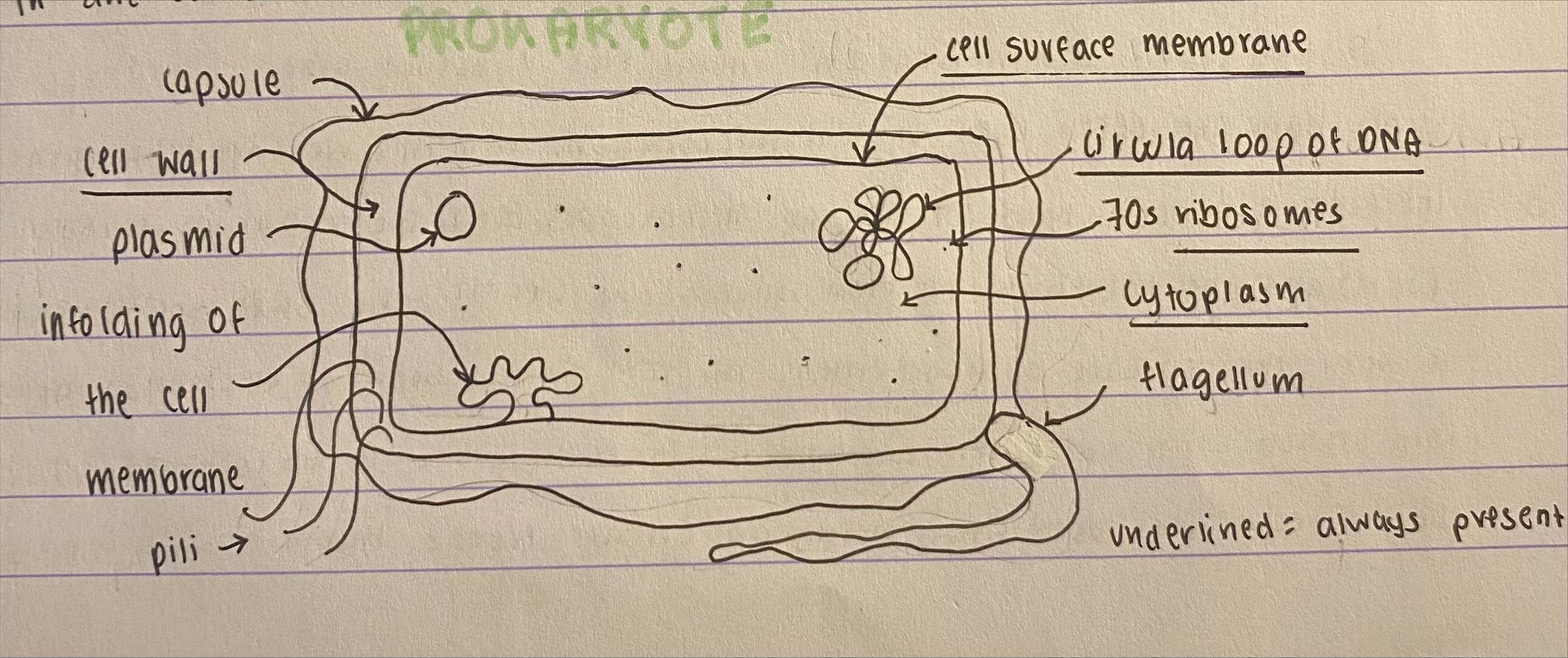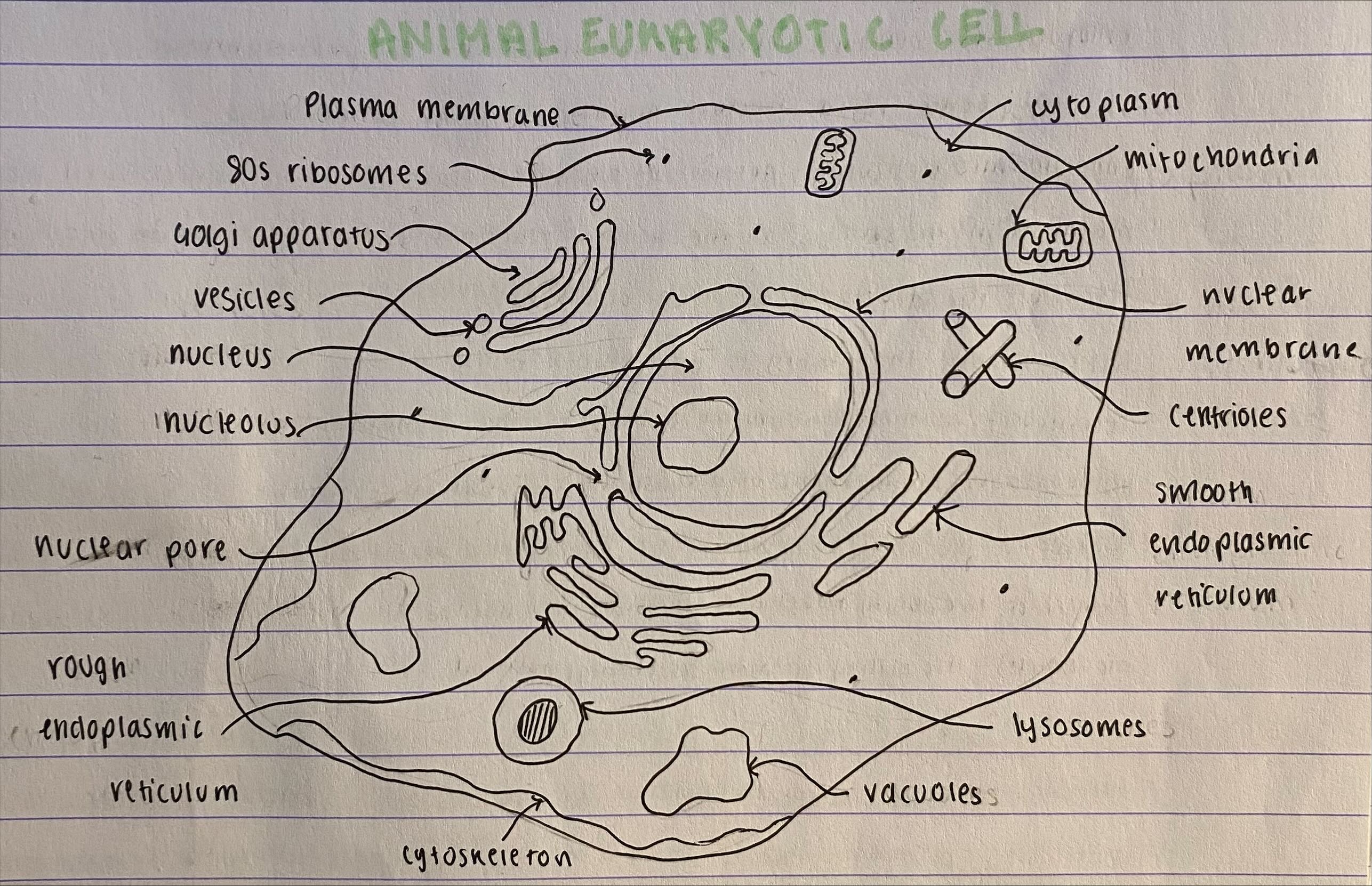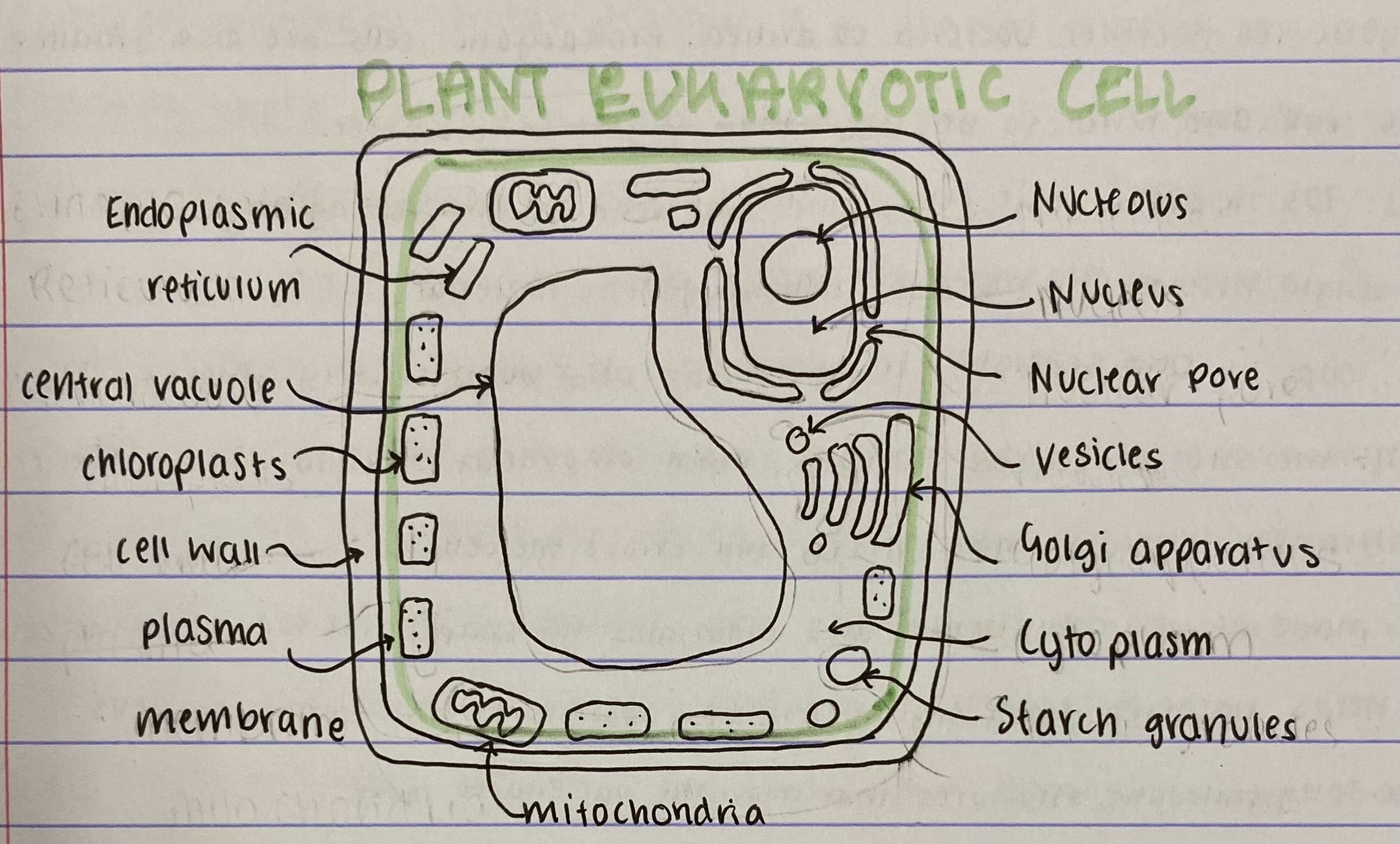A2.2 Cell Structure
1/84
Earn XP
Description and Tags
Name | Mastery | Learn | Test | Matching | Spaced |
|---|
No study sessions yet.
85 Terms
What does Cell Theory state
all organisms are composed of one or more cells
cells are the smallest unit of life
all cells come from pre-existing cells
Define Magnification
The increase in an object’s image size compared to its actual size
Define resolution
The minimal distance between two points at which they can still be distinguished as two
Convert 12m into millimetres
12 000mm
convert 350mm into μm
350 000μm
Convert 5.2μm into nm
5 200nm
Explain how a light microscope works
They use light, passing though living or dead specimens, to form an image (might include the use of stains/dyes)
Explain how an electron microscope works
They provide the greatest magnification and resolution. These use electrons passing through a specimen to form an image.
Sate the advantages of a light microscope
Inexpensive to purchase and operate
Simple and easy
Specimens may be living or dead
State the disadvantages of the light microscope
only magnifies up to 2000
Has a low resolution
State the advantages of an electron microscope
Magnifies over 500 000x
High resolution
State the disadvantages of an electron microscope
Expensive to purchase and operate
complex specimen preparation
specimens must be dead
What are the two types of micrometer
Stage and ocular
How is the ocular micrometre used in relation to the stage micrometre
The stage micrometre needs to be calibrated to the ocular one
Why can you not simply use the ocular micrometre to determine cell size?
Because the units are arbitrary.
What is often used with a micrograph to determine cell size?
A scale bar
What is the magnification equation
Magnification = Image size / Actual size
What are the 2 general types of electron microscopes
Scanning electron microscopes (SEM) and transmission electron microscopes
How do SEMs work?
Use a beam of electrons to scan the surface of the specimen
How do TEMs work?
Use a beam of electrons through a thin section of the specimen in order to view it’s inner structure
What are the two preparation techniques used for EMs?
Freeze fractioning and cryogenic electron microscopy
Define the process of freeze fracturing
Rapid freeze a dead specimen and physically breaking down the specimen (fracturing)
Define the process of cryogenic electron microscopy
Allow the image to be formed using computer enhancement that show 3D fragments of cells
What microscope can you look at live specimens
Light microscope
What are the two stains that are used in light microscopes
Fluorescent stains/dyes and/or immunofluorescence
How do fluorescent dyes work
They combine with a particular cellular component. When eradicated with UV or violet-blue light, the components fluoresce
How does immunofluorescence work
Some antibodies are already combined with dyes, specific molecules combine with target cells, when irradiating in a specific light, we can detect the target cells
What are 3 things all cells have
Cytoplasm
DNA
Plasma Membrane
Why is DNA important in cells?
Allows cells to create new cells due to DNA replication
Where is cytoplasm found?
In the boundary of the cell
What is cytoplasm composed of?
Cytosol, a fluid mainly composed of water with dissolved substances such as ions
Where do most of the cells important reactions occur?
In the cytoplasm
Where is the cell membrane found?
The cell membrane is found surrounding the cell and enclosing it’s content
What number of layers is present in the membrane?
2
What is the role of the plasma membrane?
To control the cells interactions with the exterior, to ensure the uptake of required materials into the cell and the removal of waste from the cell
What type of molecule is found throughout the cell membrane?
Proteins
What are the three roles of proteins in the cell membrane?
Cell communication
Cell recogniton
The transport of materials in and out of cells
What features are always present in a prokaryote cell?
A cell wall
Cell surface membrane
Circular loop of naked DNA
70s Ribosomes
Cytoplasm
What are features of a prokaryotic cell which aren’t always present?
A capsule
A plasmid
Infoldings of the cell membrane
pili
flagellum
Draw a prokaryotic cell

What are the two types of organism
archaea and bacteria
How big are prokaryotic cells?
Less than 1 micrometer
Is a prokaryote or a eukaryote cell bigger?
Eukaryote
Define the role of ribosomes
they bind and read mRNA during translation to produce proteins
Define the role of naked circular DNA
They contain genetic material
Define the role of plasmids
Loops of dna seperatefrom circular DNA but also carry genes
Define the role of the cytoplam
The site of cellular reactions, main component is cytosol
Define the role of the cell membrane
controls what enters and exits the cell
Define the role of the cell wall
Made up of peptoglycan, and maintains the shape and supports the cell
Define the role of capsule
prevents bacteria from drying out and protects the cell during attacks from other cells
Define the role of the flagellum
Long tail like structure that allow bacteria to move
Define the role of pili
Shorter and thinner than flagella, allows adherence between cells
What are the 16 features of an animal eukaryotic cells
Plasma membrane
80s ribosomes
Golgi Apparatus
vesicles
nucleus
nucleolus
nuclear pore
rough endoplasmic reticulum
cytoskeleton
vacuoles
lysosomes
smooth endoplasmic reticulum
centrioles
nuclear membrane
mitochondria
cytoplasm
Draw an animal eukaryotic cell

Define the role of the golgi apparatus
stores, packages, and modifies proteins
Define the role of the nuclear pore
allows communication between the nucleus and the rest of te cell
Define the role and structure of the nucleolus
A dense, solude structure involved in ribosome synthesis
Define the role of rough endoplasmic reticulum
site of proteins synthesis
What is the difference between sER and rER?
sER = rER - ribosomes
Define the role and structure of lysosomes
sacs bounded by a single membrane and contains transport enzymes
Define the role and structure of centrioles
composed of microtubules and associated with nuclear division
What is the name of the area where centrioles are found?
A centrosome
What type of free ribosome do you find in eukaryotes?
80s
What type of ribosome do you find in mitochondria?
70s
What type of free ribosome do you find in prokaryotic cells?
70s
Draw a eukaryotic plant cell

Define the function of a central vacuole
It has storage and hydrolytic functions
Define the function of chloroplasts
Contain chlorophyll and is the site of photosynthesis
Define the cell wall
a semi-rigid structure mainly composed of cellulose
define the endoplasmic reticulum
a network of tubes and flattened sacs which connects with the plasma membrane
Define metabolism
The sum of all the chemical reactions that occur within an organism
Define homeostasis
maitaining a constant internal environment
Define the exterior of the cell in a plant, animal, and fungal cell
Plant: a cell wall with cellulose + plasma membrane
Animal: Plasma membrane
Fungal: a cell wall with chitin + plasma membrane
Define vacuoles in the cell in a plant, animal, and fungal cell
Plant: large vacuoles for the production of carbohydrates
Animal: when present, vacuoles are small and numerous
Fungal: when present, vacuoles are small and numerous
How do plant cells store carbs?
as starch
How do animal and fungal cells store carbs?
as glycogen
Give an example of an atypical structure in a specialised cell
the number of nuclei
What are the two stypes of hyphae?
Septate hyphae and aseptate hyphae
Which type of hyphae contains more than one nuclei?
Aseptate
Name the cell which has no nucleus in the body
A red blood cell
How are muscle cells adapted?
there isn’t that much cell membrane so the cells are tubular and merge together therefore having multiple nuclei
What is the mneumonic to remember the evidence for endosymbiosis in mitochondria and chloroplasts?
Mad Dr.
Membranes
Antibiotics
Division
DNA
Ribosomes
Using the mneumonic mad dr. what is the evidence of endosymbiosis in mitochondria and chloroplasts?
Membranes: they have a double membrane
Antibiotic: they are both susceptable to antibiotics like bacteria
Division: divide by binary fission like bacteria
DNA: has its own DNA which is naked and circular
Ribosomes: have their own ribosomes which are 70s
Explain the theory of how complex eukoryatic cells were create through endosymbiosis
2 billion years ago a larger cell that had a nucleus and was capable of sexual reproduction, engulfed a smaller prokaryotic cell that could produce energy, they developed a mutually beneficial relationship called endosymbiosis
What process allows specialisation within the cell?
Compartmentalisation